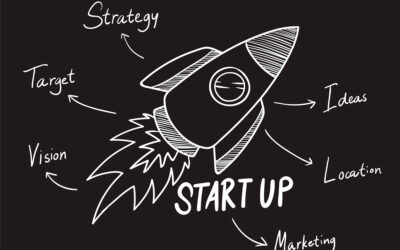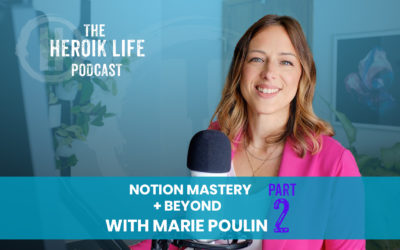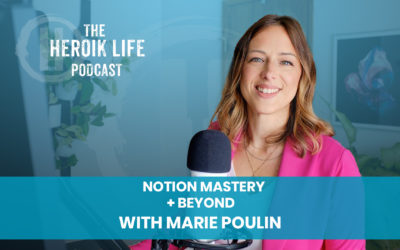If you take time to identify the top-performing 20% of your efforts, you can focus on stewarding their growth and optimizing your efforts. This is the promise of the 80/20 Rule, but the trick is learning how to find it.
The Concept and History In Brief
The rule states that, for many events, roughly 80% of the effects come from 20% of the causes. Also known as the Pareto Principle, named after the Italian economist Vilfredo Pareto, who found that 80% of the land in Italy was owned by 20% of landowners. He found similar distributions in other countries and his work was later famously applied to business optimization efforts. And though there’s no magic to it the 80/20 Rule can help you optimize your business if you apply it in the right way.
For your business to reach the promised land, you need to start mapping things out and digging around to find the efforts that are outperforming the rest by 5:1.
Here’s a basic process to help you do that.
1. Pick a single area of the business that you wish to refine.
A page is a thing. A chapter is a whole lot of things. A book is a universe of things. Take one chapter at a time and look at the things that matter.
If you’re new to optimizing processes, trying to look at all the intricate activities of the business in one sitting will prove maddening and fruitless. So pick a department, initiative, or process. It may be sales, business development, strategic partnerships, marketing, advertising, or something else entirely. It’s important to pick a focus area and so you can get a clear picture without distraction and noise of the broad view.
2. Define and clarify the various components of your business: the areas, key activities, and ecosystems that you wish to optimize.
Imagine that you’re an archeologist, you’ve mapped out a grid to dig for dinosaur bones, and now you’re choosing where to dig first based on the information, hunches and gut impulses you have handy.
Once you’ve selected your focus area, you need to define which efforts you believe are the most likely leading or greatest hindering your initiatives. It’s time to start tracking them. Do the recon. Investigate the suspects. Look closer. Don’t over think it, this is more of an alchemy than a science.
Take your marketing efforts for example. While marketing is a huge topic, you can probably define 4-5 contending marketing efforts that are probable performers eg direct mail, Facebook targeted ads, Google targeted ads, email campaigns, etc.
3. Choose your metrics wisely.
How you measure and value any particular initiative or effort may be entirely unique to your company. It’s important to view things through the lens of your strategic plans, goals, and known Key Performance Indicators (KPI’s).
Be careful – In the age of Information Overload, there is a lot of noise, and there are many misleading signals. The loudest sound you may hear may not be the most important. You may just have the microphone placed in the wrong spot. Take some serious time to think critically about what matters most in terms of your desired outcomes and consideration of the recipes for great winning efforts. Planning a little does not save you a lot of time by default. Planning wisely does.
Pro Tip – Start at the end of the process, near the transaction, and work backward.
Often times, we place the most value on the efforts that influence the revenue generation moment; the sale, the transaction. It’s not always the best knob to turn, but it’s a good place to start.
The Information Age is also the Age of Discernment. You need to be precise. You may find hidden indicators that are more helpful, like the specific event or behavior that generates a qualified prospect, the commercial teaching delivered to the qualified prospect, the signing of a letter of intent, the first small transaction, the first big transaction, or the moment someone simply subscribes to a higher tier of content you provide. Anyone or combination of these are examples that can have a profound influence on the success of your business.
Possible types of inputs to gather include:
- There are stages in the journey that can be defined. Is there a process involved? What are the steps? What stage is this item in and how long has it been there?
- There are dates and times for the activity that can lead to other calculations – When did we start? When did this start? How long did it take?
- There are people involved. Who are they? What are their roles? Where are they?
- These can help you identify meaningful relationships and connections and help with the analysis. You may notice certain people do things faster or slower, or certain stages require a significant amount of time, and you’ll later want to investigate why.
4. Define an adequate window of time to evaluate your efforts.
You want, of course, to have the right information like yesterday, but most often you need to take a reasonable amount of time to collect the appropriate amount of data before you can be in a position to analyze it. A day, week or month are pretty statistically useless windows of time. I recommend a year, and at least starting with a quarter to develop a data collecting habit. While this is an alchemy, the longer you collect data, often the better your dataset, and better your system.
It amazes me how many businesses don’t do year over year comparisons. You need a year’s data to start. And there’s no time like the present to start collecting it.
Start wrapping your head around realistic timeframes to give your business the results and growth it deserves.
Expect Errors & Surprises
As you start out on your journey to optimize key parts of your business, you will encounter errors and breakdowns in your system, especially on your first try. This is why it’s important to commit to a longer time frame. You may discover a new metric or category to add to the system, which might require you to restart an improved experiment. This is totally normal and happens 99.95% of the time.
You don’t know what you don’t know, and uncovering new KPIs is typical when you really focus on optimizing things.
5. Choose your canvas.
Decide what you’ll use to actually draw the map. There are countless tools and systems and apps to choose from. Uber nerds use complex, data science tools like Tableau, R, Python, and others. But fear not my less nerdy friends, unless you’ve got your black belt in a better method or tool, your canvas can be a simple spreadsheet.
6. Prep your canvas.
Grid out the columns and rows in a spreadsheet. Define the axes. Label all the known elements, areas and metrics you’ll be recording on your journey.
Pro Tip – Save time by erring on the side of more vs. less data at least for the first year.
I’ve worked on spreadsheets over 6 feet wide on some early stages of projects, so that I have more pieces of the puzzle to play with, and can use them to identify and validate other KPIs and conclusions.
How does this save you time? The more data you have, the more you can analyze over that time period. As I mentioned, you’ll discover unexpected metrics to be important, and without the right data to help guide you, you’ll have to start all over to validate, backtest, or determine your next move.
7. Collect the data and analyze it.
Many who make it to this step fall off here. You have to incorporate the habit of data mapping into your regular workflow or automate it for later analysis. Focus, determination and follow through will be tapped on this journey. As it is with all worthy endeavors.
Pro Tip: Don’t overextend yourself trying to find workarounds.
Before you go looking for an automation tool, know that most of the ones that work require even more work in different areas. Many get distracted and lost and quit just veering off the path in search of workarounds.
Sometimes the best approach is the same way you attack the dishes on Thanksgiving – you just glove up and do it. The simple paths most often avoided because they require sweat and critical thought. Stop scheming on exotic workarounds and get cracking.
8. Review your findings and Declare a winner.
If you’ve been regularly involved with the collection and analysis of the data, the top performing efforts and some likely problem areas should all be easy to spot.
Pro Tip – Participate, engage and collaborate; don’t outsource or unplug the whole effort. If you delegated or outsourced the effort to someone else, you’ll probably spend considerable time and energy questioning the integrity of the system, wondering if the collected data is accurate and conclusions or analysis is trustworthy. If you collaborate with a partner or lead the entire effort, you are far less likely to second guess the results and conclusions. This is yet another reason why as a consultant, collaboration with clients vs. taking on a completely outsourced effort is required in most growth initiatives, especially in early stages. Collaboration requires personal ownership, which preserves trust and integrity in the effort and the data.
9. Brainstorm the next steps.
Ask yourself a few thoughtful questions and take time to explore them. Here are some suggestions:
- How might you improve the winner?
- Is there a clear loser you might fire?
- Are there stages or steps or processes that might need to be refined?
- What might be the impact of implementing those refinements?
In Conclusion
This is a rudimentary version of the approach used in our Heroik consulting practice to help to create the criteria for the components of the customized growth engine for companies like yours. Often clients don’t have a decent map of their business, or enough data to analyze and use to properly pinpoint the problems. You need these to define requirements and design frameworks for possible solutions. Assessing and mapping your business is an essential step.
How’s your optimization effort going? What challenges are you facing in your business? And how might I help? Let me know in the comments.





0 Comments